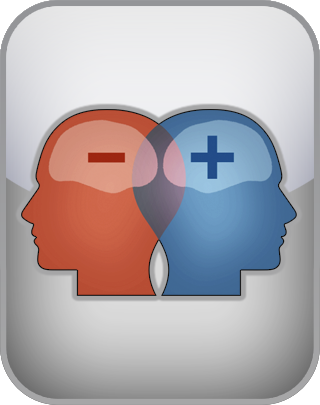Academically reviewed by Dr. Sabina Alispahić, Ph.D., professor of psychology
Bipolar I Test
Bipolar I disorder is a mental health condition characterized by the occurrence of at least one manic episode, typically accompanied by episodes of major depression. It is one of several types of bipolar disorders, with bipolar II disorder being another common form.
The exact cause of bipolar disorders is not fully understood, but it is likely influenced by a combination of genetic, biological, and environmental factors. Bipolar I disorder can significantly impact an individual's daily functioning and quality of life.
Are you showing signs of bipolar I disorder? For each of the following questions, indicate how well it applies to you.
Question 1 of 36
For at least one week, I have experienced the following:
I am constantly happy.
| Disagree | Agree |
NEXT
The IDRlabs Bipolar I Test was based on the Diagnostic and Statistical Manual for Mental Disorders, 5th edition, and developed by IDRlabs.
According to the World Health Organization (WHO), bipolar disorders, including both bipolar I and bipolar II, affect approximately 2.4% of the global population. This figure can vary across different regions and populations. In the United States, the National Institute of Mental Health (NIMH) estimates that around 2.8% of adults have experienced bipolar disorder in the past year, with bipolar I disorder being a subset of these cases.
It's important to note that bipolar disorders often first manifest in late adolescence or early adulthood, but they can occur at any age. Diagnosis and treatment are critical for managing the condition and improving the quality of life for individuals affected by bipolar disorders.
Bipolar I disorder is a mental health condition where a person experiences extreme mood swings. These mood swings involve periods of intense highs, known as manic episodes, and periods of deep lows, called depressive episodes. During manic episodes, individuals might feel excessively happy, energetic, and impulsive. They may talk rapidly, have racing thoughts, and engage in risky behaviors without considering the consequences.
On the flip side, depressive episodes involve intense feelings of sadness, hopelessness, and a lack of interest in things that usually bring joy. Energy levels are low, and daily activities may become challenging. These mood swings can be severe and disruptive to daily life. When in a manic state, individuals might have difficulty focusing, while during depressive episodes, even simple tasks can feel overwhelming.
In some cases, people with bipolar I may experience psychotic features such as hallucinations or delusions, especially during manic episodes. Importantly, there are periods of stability between these extreme highs and lows, where individuals may feel and function relatively normally. Bipolar I disorder often begins in late adolescence or early adulthood, but it can occur at any age.
Bipolar I disorder is typically managed through a combination of medications, psychotherapy, and lifestyle adjustments. Treatment plans are individualized and may vary based on the specific needs and preferences of the person with bipolar I disorder. It's important to note that the treatment approach may evolve over time based on the individual's response to medications and therapy. Medication adjustments, therapy modifications, and ongoing support are integral parts of managing bipolar I disorder effectively.
Individuals with bipolar I disorder should work closely with a psychiatrist or other mental health professionals to develop and maintain a comprehensive treatment plan tailored to their specific needs. It's also essential for them to communicate openly about their symptoms, concerns, and any side effects of medications to ensure effective and personalized care.
In summary, bipolar I disorder involves extreme mood swings between manic and depressive episodes, with potential psychotic features. Treatment includes medications, psychotherapy, and lifestyle adjustments. Regular monitoring and a strong support system are essential for managing the disorder and improving overall well-being.
As the publishers of this free test, which allows you to screen yourself for the characteristics of bipolar I disorder, we have strived to make the test as reliable and valid as possible by subjecting this test to statistical controls and validation. However, free online quizzes such as the present test do not provide professional assessments or recommendations of any kind; the test is provided entirely “as-is.” For more information about any of our online tests and quizzes, please consult our Terms of Service.

